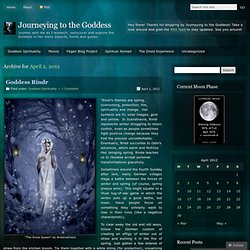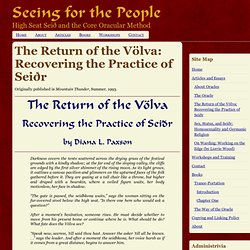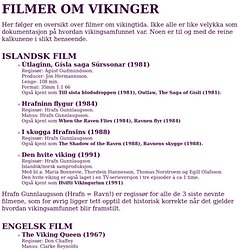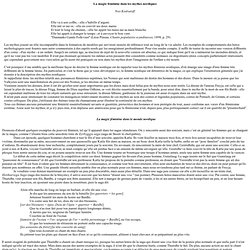

Skaldic poetry project. 2012 April 02 « Journeying to the Goddess. “The Snow Queen” by ArwensGrace “Rindr’s themes are spring, overcoming, protection, fire, spirituality and change.

Her symbols are fir, solar images, gold and yellow. In Scandinavia, Rindr represents winter struggling to retain control, even as people sometimes fight positive change because they find the process uncomfortable. Eventually, Rindr succumbs to Odin’s advances, which warm and fertilize Her, bringing spring. Rinda teaches us to likewise accept personal transformations gracefully. Sometimes around the fourth Sunday after lent, many German villages stage a battle between the forces of winter and spring (of course, spring always wins). To clear away the old and old ways, follow the German custom of creating an effigy of winter out of straw and burning it in the fire of spring.
‘As Rindr accepts Odin, I now accept change.’ The Return of the Völva: Recovering the Practice of Seiðr. Originally published in Mountain Thunder, Summer, 1993.

Darkness covers the tents scattered across the drying grass of the festival grounds with a kindly shadow; at the far end of the sloping valley, the cliffs are edged by the first silver shimmer of the rising moon. As its light grows, it outlines a canvas pavilion and glimmers on the upturned faces of the folk gathered before it. They are gazing at a tall chair like a throne, but higher and draped with a bearskin, where a veiled figure waits, her body motionless, her face in shadow. “The gate is passed, the seidhkona waits,” says the woman sitting on the fur-covered stool below the high seat. “Is there one here who would ask a question?” This could be a scene from the world of our ancestors, but in fact the ritual described above took place at a pagan festival in Northern California.
Norse Shamanism Shamanism may well claim to be the oldest type of spiritual practice still in use among humankind. Seidh and, Odin could change himself. Women and Magic in the Sagas: Seiðr and Spá. I.

Introduction The Norse practitioners of the various arts of magic were highly respected professionals whose services were valued by their communities (Jochens, Old Norse Magic and Gender, 307; Ellis-Davidson, 37). In the Norse literature, men as well as women appear wielding the arts of magic, however, it is explicitly stated in several places that by doing so these men were taking on a female art so thoroughly that it endangered their reputation and manhood (Ynglingasaga, ch. 7, for instance).
Since Norse magic was so intrinsically a woman's art, throughout this paper I will deal with magic as practiced by women, using the feminine pronoun, but it should be remembered that men as well as women practiced the art as recorded in the sagas. Many of the most important cult practices of the pagan Norse religion occurred in the housewife's domain, where the woman of the house would act as priestess or gyðja (Steffensen, 191).
II. Seiðr Spá Galdr. Ttir - Runes. FILMER OM VIKINGER. Her følger en oversikt over filmer om vikingtida.

Ikke alle er like velykka som dokumentasjon på hvordan vikingsamfunnet var. Noen er til og med de reine kalkunene i slikt henseende. ISLANDSK FILMÚtlaginn, Gísla saga Súrssonar (1981) Regissør: Ágúst Gudmundsson. Arild Hauge's Runes and Vikingpage. Ragnarök. Nordic Magic Healing: runes, charms, incantations, and galdr. - Les trois Nornes, les Dises et les Valkyries (Naudiz, Pertho, Ansuz) La magie féminine dans les mythes nordiques Yves Kodratoff Elle va à son coffre, - elle s’habille d’argent.

Elle mit or sur or, - elle en couvrit ses deux mains Et tout le long du chemin, - elle lui apprit les runes sur sa main blanche. Elle lui apprit à changer le temps - et à envoyer le bon vent. "Danmarks Gamle Folkviser" (Léon Pineau, Chants populaires scandinaves, 1898, p. 29) Les mythes jouent un rôle incomparable dans la formation de modèles qui serviront ensuite de référence tout au long de la vie adulte. C'est pourquoi il me semble que la meilleure façon de décrire la femme nordique est de rappeler tous les mythes féminins nordiques, d'où émerge une image d'une femme très différente de la femme latine. Je rappellerai donc les mythes relatifs aux puissances féminines suprêmes, les Nornes qui sont maîtresses du destin des hommes et des dieux.
Viennent ensuite les déesses, dont il est dit qu'elles sont aussi importantes que les dieux mais dont hélas peu de mythes nous sont restés.